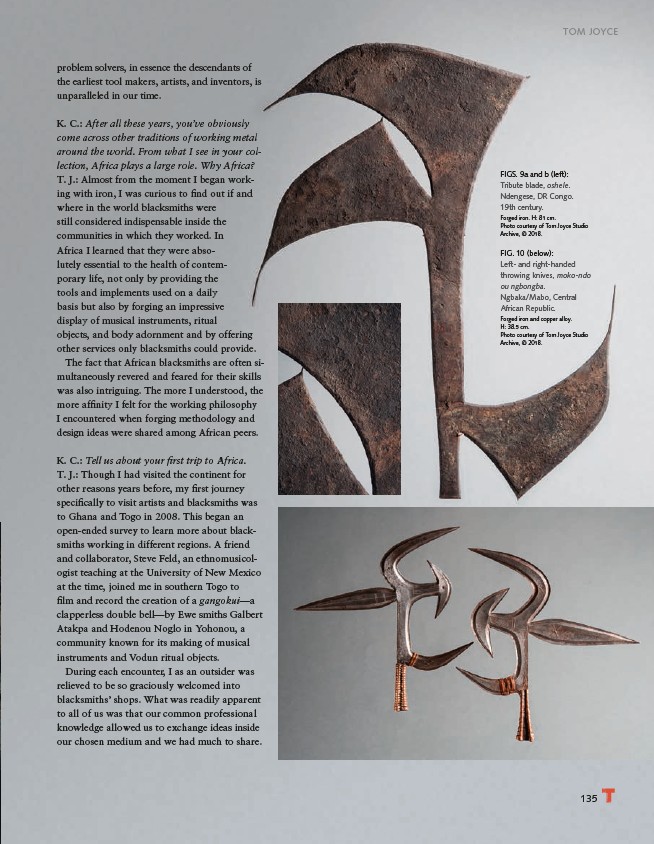
TOM JOYCE
135
problem solvers, in essence the descendants of
the earliest tool makers, artists, and inventors, is
unparalleled in our time.
K. C.: After all these years, you’ve obviously
come across other traditions of working metal
around the world. From what I see in your collection,
Africa plays a large role. Why Africa?
T. J.: Almost from the moment I began working
with iron, I was curious to find out if and
where in the world blacksmiths were
still considered indispensable inside the
communities in which they worked. In
Africa I learned that they were absolutely
essential to the health of contemporary
life, not only by providing the
tools and implements used on a daily
basis but also by forging an impressive
display of musical instruments, ritual
objects, and body adornment and by offering
other services only blacksmiths could provide.
The fact that African blacksmiths are often simultaneously
revered and feared for their skills
was also intriguing. The more I understood, the
more affinity I felt for the working philosophy
I encountered when forging methodology and
design ideas were shared among African peers.
K. C.: Tell us about your first trip to Africa.
T. J.: Though I had visited the continent for
other reasons years before, my first journey
specifically to visit artists and blacksmiths was
to Ghana and Togo in 2008. This began an
open-ended survey to learn more about blacksmiths
working in different regions. A friend
and collaborator, Steve Feld, an ethnomusicologist
teaching at the University of New Mexico
at the time, joined me in southern Togo to
film and record the creation of a gangokui—a
clapperless double bell—by Ewe smiths Galbert
Atakpa and Hodenou Noglo in Yohonou, a
community known for its making of musical
instruments and Vodun ritual objects.
During each encounter, I as an outsider was
relieved to be so graciously welcomed into
blacksmiths’ shops. What was readily apparent
to all of us was that our common professional
knowledge allowed us to exchange ideas inside
our chosen medium and we had much to share.
FIGS. 9a and b (left):
Tribute blade, oshele.
Ndengese, DR Congo.
19th century.
Forged iron. H: 81 cm.
Photo courtesy of Tom Joyce Studio
Archive, © 2018.
FIG. 10 (below):
Left- and right-handed
throwing knives, moko-ndo
ou ngbongba.
Ngbaka/Mabo, Central
African Republic.
Forged iron and copper alloy.
H: 38.5 cm.
Photo courtesy of Tom Joyce Studio
Archive, © 2018.